Introduction
Moving to western Montana in November meant that unless I wanted to wait until spring to explore the jaw-droppingly beautiful landscape, I’d have to get equipped for oversnow travel. Since I’d moved to Montana specifically for its proximity to outdoor recreation, within a few weeks of arriving I’d acquired a pair of cross-country skis and a pair of snowshoes. In what I viewed as an omen from the winter gods, the security deposit from my previous apartment was almost the exact amount of a package deal from the local outdoor store for cross-country skis, poles, boots, and bindings. After a few day trips on skis to get the hang of this new (at least to me) mode of human-powered travel, I skied three miles into a US Forest Service rental cabin for my first overnight trip in Montana on winter solstice. Almost ten years later, that same cabin is often booked solid six months in advance, but I was able to book it for a weekend less than two weeks out.
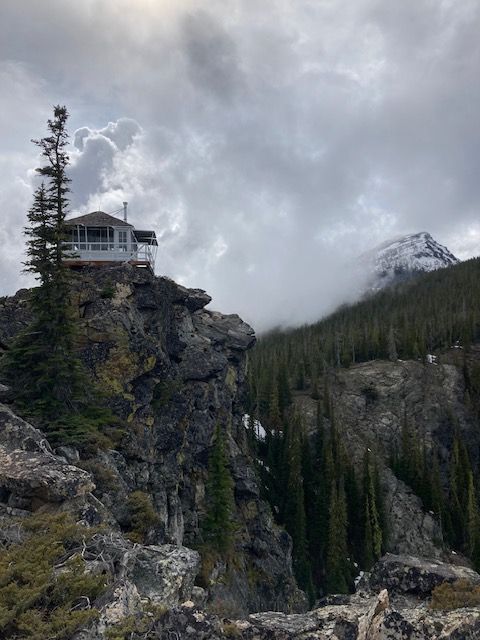
I spent the rest of that winter alternating between snowshoes and cross-country skis for my backpacking trips, staying in a Black Diamond Firstlight tent and slowly building up the winter camping skills that the temperate climate of the Southeast hadn’t allowed me to hone. The next winter, I made a grueling New Year’s Eve trip to a fire lookout (which I’ll refer to as “Magic Rock Lookout” to provide some semblance of anonymity) that involved snowshoeing approximately 5 miles and gaining over 3,500 feet of elevation. Since that inaugural visit, I’ve stayed overnight at that lookout over two dozen times and made at least as many day trips. I’ve helped with volunteer restoration efforts, packed out a broken Coleman stove, cut out trees across the trail, and split at least five times more firewood for the woodstove than I’ve burned. Friends jokingly call me “The Mayor of Magic Rock Lookout” and it’s likely not hyperbole to posit that other than the fire lookouts who were assigned there when it was staffed as an active lookout for fire suppression, I’ve probably spent more nights there than anyone else (the logbook for the lookout also supports this theory).
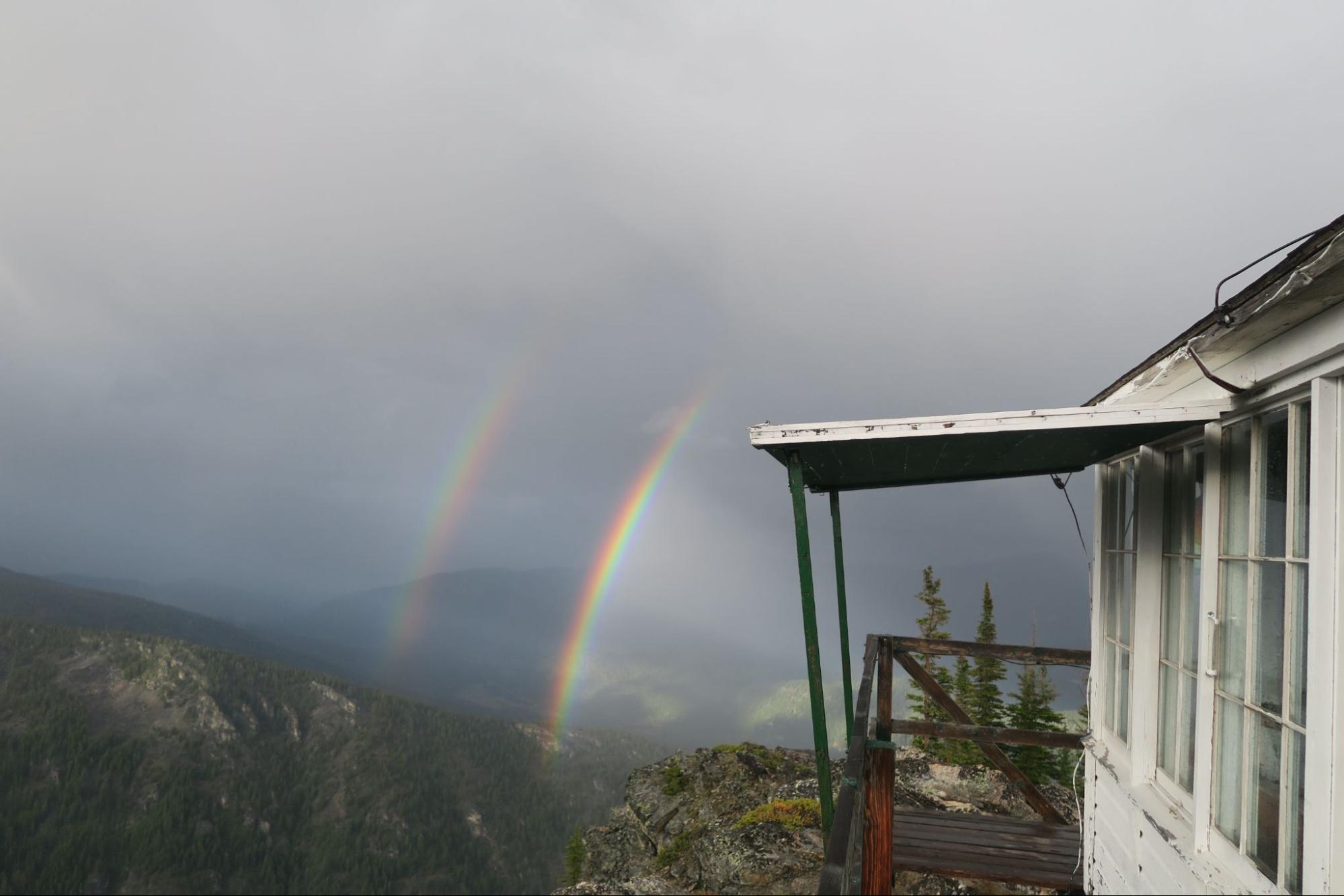
I’ve stayed at the lookout at least one night in every month of the year except December, which I hope to rectify later this year. Despite my initial attempt being aimed for New Year’s Eve, I only spent the second night of that trip – January 1st – in the lookout; the first night I spent in a bivy sack a quarter-mile from the lookout as I’d become exhausted and benighted and didn’t want to press on somewhat blindly toward the lookout (I was solely using a paper map at the time, GPS likely would’ve ensured I arrived at the lookout but also would’ve denied me a character-building experience). Unsurprisingly, the months I’ve stayed there most are when it’s easiest to access – roughly from when the snow melts until it piles back up again – and June is currently in the lead. After a particularly exhausting snowshoe visit, I swore off any future trips using snowshoes. I decided it was time for me to gain a new set of skills to access the lookout in winter: backcountry skiing.
The timing was great, as I’d lucked out earlier that winter and won a pair of skis at a raffle and was able to trade them in for store credit and ended up with a great pair of all-mountain skis that had Alpine Touring (i.e. backcountry skiing) bindings on them. A perfect set-up for what I was envisioning, which was more about getting myself into the backcountry as quickly as possible as I had no real interest in downhill skiing at ski resorts.
The Journey to Backcountry Skiing
Growing up in Kentucky with parents from south Georgia hadn’t exactly given me a lot of exposure and opportunities for skiing. I went a few times as a kid to a ski hill in Indiana, but skiing manmade, icy snow on runs with a maximum vertical drop of 300 feet didn’t exactly give me an incurable case of Ski Fever. I progressed at cross-country skiing quicker than I expected and appreciated the relatively low-cost of the activity as well as the fact that it could be done solo without seeming like one was taking unnecessary risks. Being able to easily access US Forest Service Rental Cabins was also a huge benefit, especially since as the years went on my winter backpacking trips largely became limited to those that involved cabins or hot springs.
Downhill skiing, perhaps the most critical skill outside of avalanche safety to have for safety while backcountry skiing, went a bit less smoothly for me and initially made me think I just wasn’t cut out for anything other than kicking-and-gliding through mild terrain on Nordic skis. The local ski hill had an excellent and economical beginner package, so I thought even though I was 30 and for all intents and purposes downhill skiing for my first time, and that given my general fitness and several seasons of cross-country skiing on my legs, I’d be able to gain the basic competencies and comfort level needed without having to invest too much time and energy. I couldn’t have been more wrong. At the end of the six days of skiing I did that season (first three days with hour-long lessons, then three days solo) I was only able to feel moderately comfortable going down groomed intermediate runs. I was able to enjoy myself, but overall found it to be about an even mix of humbling and discouraging. Backcountry skiing up to Magic Rock Lookout anytime soon felt about as realistic as skiing down Corbet’s Couloir in Jackson Hole.
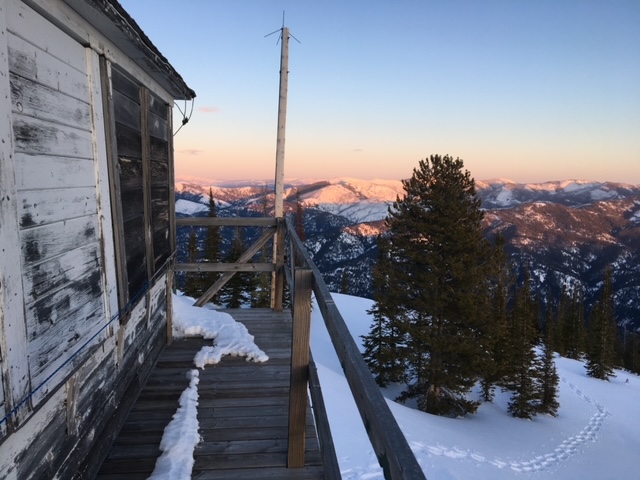
I stuck to cross-country skiing the next few winters, enjoying many fulfilling multi-day ski tours, but fate once again intervened and a girlfriend convinced me to give downhill skiing another chance. She’d grown up skiing near Seattle and, oddly enough, had been a ski instructor in Jackson Hole for a winter. To describe her as an expert skier would be an understatement. Since I had a handle on the basics of skiing and she had a lot of patience, I was able to slowly progress over the next few seasons. With the ski hill only an hour away and season passes being as affordable as one could hope for in a state experiencing pervasive rural gentrification, I was able to get in a lot of ski days over the winters and eventually got comfortable enough to ski all the black diamond runs and most of the double black diamonds. Which, based on the estimation of her and other folks I skied with, meant that it was time to dip my toe into backcountry skiing if I still felt the urge.
And the urge was most definitely still present. Since I’d sworn off snowshoe ascents, it had been over three years since I’d visited in winter. The idea of visiting it in all its winter charm and then enjoying the descent on skis seemed too good to be true. The only minor issue was that no one else had a schedule that lined up with mine and doing my first backcountry ski trip solo seemed borderline reckless.
Working in my favor was the fact that none of the route to the lookout was in avalanche terrain and by heading up in mid-April the snowpack was more stable, effectively reducing the avalanche risk to zero. Also in my favor was the fact that I would be in familiar terrain, the days were long, and my fitness was as good as it had ever been. After getting three separate opinions from three different ski partners, one of whom had been to the lookout on skis recently, the consensus was that it didn’t seem too foolhardy given the context. With what was tantamount to a resounding endorsement, the anticipation for a weekend outing to a familiar lookout using a novel method of travel began to build.
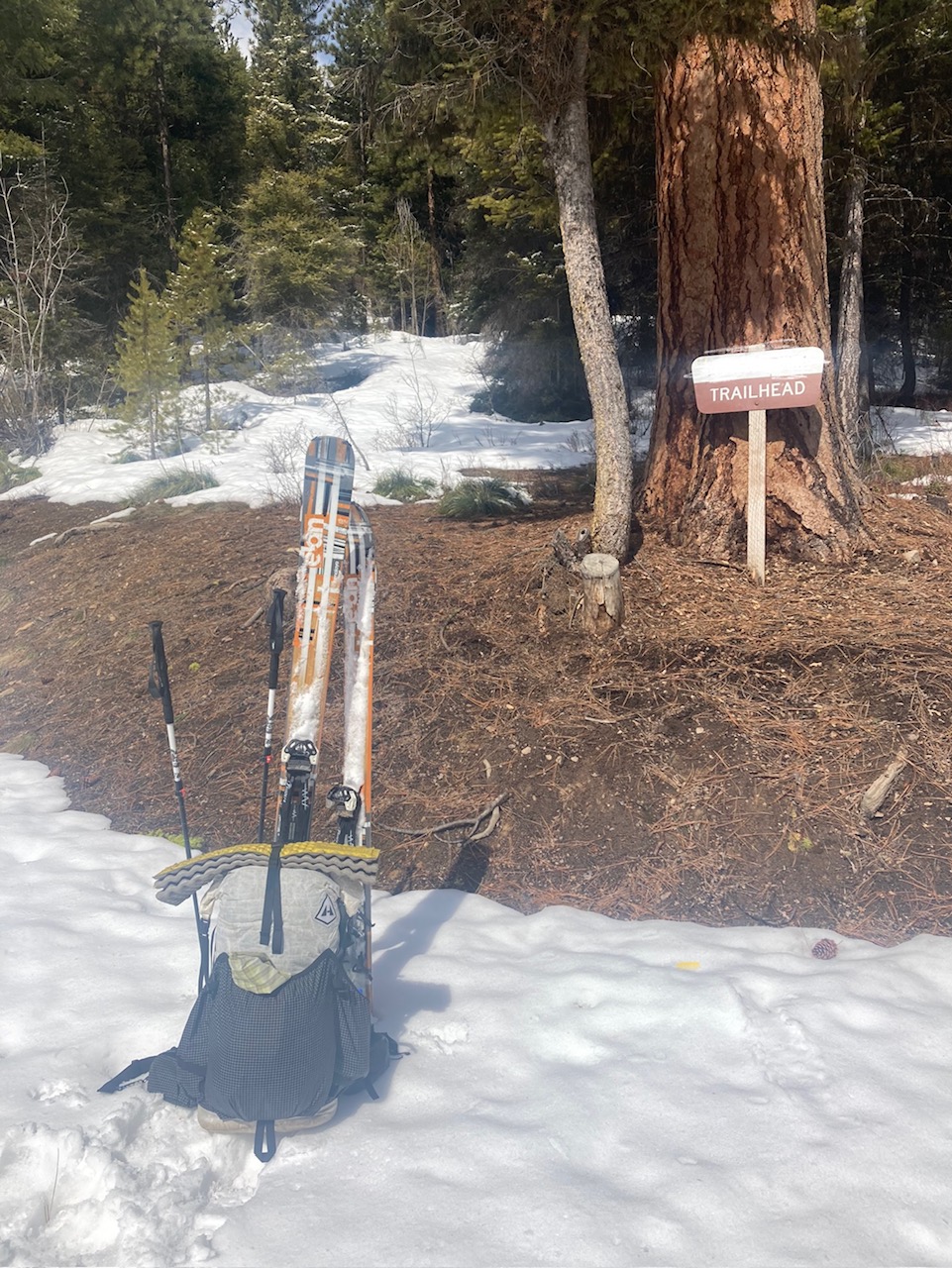
Ski Cabineering
Heeding a friend’s advice, I put the skins on my skis before packing up the car and heading to the trailhead. I made it less than a mile up the access road before I had to park at an impassable snow drift. For the next few miles, I’d alternate between skiing and walking in my ski boots when the snow became patchy or nonexistent. Things were starting to melt out down low, but as soon as I reached the trailhead the snow became consistent and I was able to duck into the forest and began as direct of an ascent as possible.
I was absolutely enamored by the sensation of skinning uphill through a beautiful coniferous forest. The sense of freedom and adventure was exhilarating. It just felt right to finally be using the backcountry bindings on my skis, adjusting the heel lifters when the terrain became steep enough to need them, and gliding up through the forest. It was exponentially more enjoyable than the slog of snowshoeing to the lookout. If going up was this much fun, then going down tomorrow was going to be euphoric, I thought as I smiled to myself. I took two leisurely breaks on the way up to air out my feet, rehydrate, and refuel. I maintained a steady but not hurried pace when moving and only hit a few slow spots where thin cover and/or micro-navigational issues had to be addressed and slowed me down. I arrived at the lookout in the early afternoon, roughly three hours after leaving the car.

Reaching the lookout always brings me a sense of achievement and joy, but it was particularly thrilling to have reached it on skis. I was smiling from ear to ear as I set about the familiar tasks of opening up the shutters, sorting out my minimal gear onto the bed and table, and enjoying the expansive view from such an unlikely and inhospitable location. Without the lookout, the rocky promontory wouldn’t invite one to linger much longer than a lunch break, especially in winter. But with a simple building, no longer even used for its intended purpose, this spot became a hermitage of sorts. It is outfitted with a simple wood stove, a worn out mattress that is probably older than I am, random cookware, and two pairs of binoculars as well as an assortment of tools to help make minor repairs.
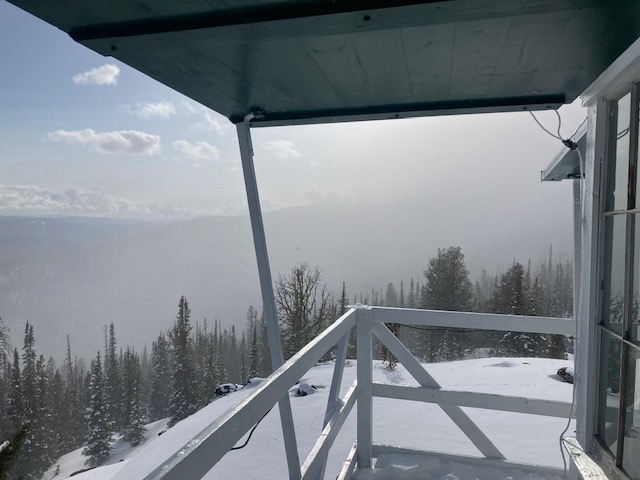
As I settled into the lookout and began to melt snow for the evening’s cooking and hydration needs, a squall blew in. I was hoping for a few inches of fresh snow to ski down on, but the storm blew out as quickly as it came in. Views to mountains afar returned, with a few clouds swirling around to provide some dramatic ambience. I contemplated starting up the wood stove, but given the relatively scarce supply of wood and the mild temperatures I chose instead to just drink lots of hot tea and put on all my layers. I stretched out my muscles as much as I could and looked off the lookout’s catwalk to the slope I would be descending in the morning, visualizing my turns. The evening went by at a perfect pace and the sunset was pleasant, but the cloud cover prevented me from stargazing and I went to bed shortly after dark.

Waking up at almost 8,000 feet in a room with a 360-degree view is always delightful, but the sunrise when I awoke was majestic beyond words. With a cup of coffee in hand, I walked around the catwalk to appreciate it al fresco before returning to my sleeping bag for some warmth and relaxation. I was in no hurry to leave, both for the obvious reason of wanting to prolong my time in such a magical spot and to let the snow warm up to make for a more enjoyable descent. The conditions weren’t quite right for corn snow to form, but I was hoping for things to soften up a bit before I headed down.
After a few hours, my eagerness for skiing got the better of me and I packed up my gear, closed the eight shutters, meticulously tidied the lookout and swept it out, and then finally got into my skis and pointed them downhill. The descent had moments of bliss, but it was clear within my first few turns that the snow was much too hard to make for enjoyable skiing. Lots of sidescraping was involved as I lost the elevation I’d gained the previous day. I skied cautiously – between the less-than-ideal conditions and the weight on my back, it seemed like it would be easy to take a fall.The descent was slow, as I told a friend after the trip to illustrate my timidity on the downhill: “I was just skiing for the car, not skiing for the gnar.”
Although my trip lasted barely 24 hours, the deep satisfaction and sense of accomplishment had me buzzing for days. I couldn’t wait to go back and planned a return trip for the next weekend with those who had expressed interest but couldn’t make the initial short-notice trip. I’d ski up solo for a night, then ski back down to the road to “guide” two friends back up for another night. Sharing the trip with others, including one who’d visited the lookout on foot but not yet on skis, made an already enchanting experience even better.
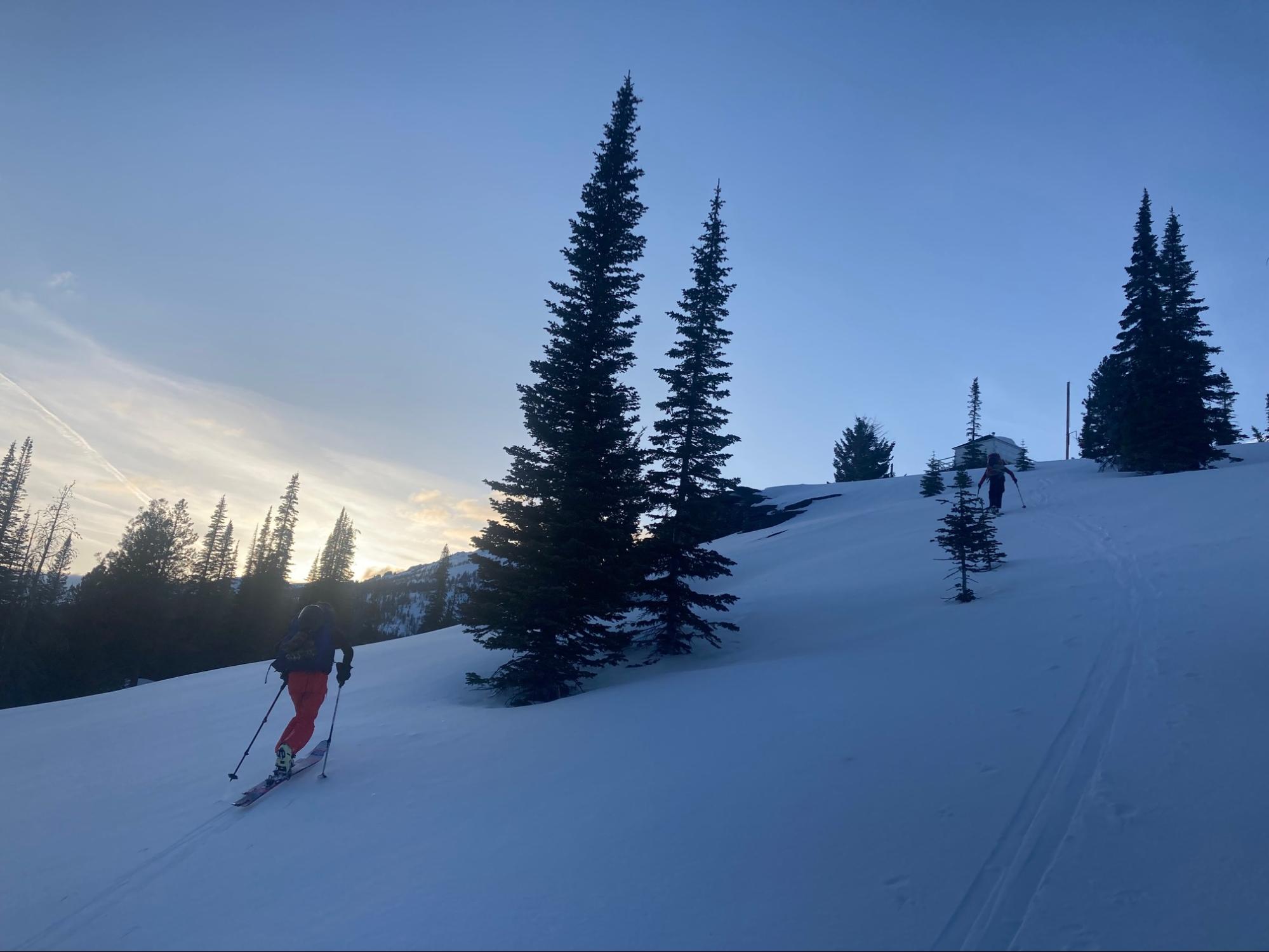
Cozied up by a fire with friends and sipping wine while watching the sun dip below the ridge just west of the lookout was sublime beyond words. A clear sky even allowed us to glimpse some shooting stars before we went to bed. We took our time before leaving in the morning and the conditions had softened up the snow to where it allowed for enjoyable turns and carving through the trees on steep but not scary slopes. Although this will probably be my shortest season of backcountry skiing – it was all of a week long – I know without a doubt that it will be one of my most memorable.
Related Content:
- Trailhead: Winter Backpacking Trailhead
- Trip Reports: More content about making the most of your 24 hour trips!
- Places: Skiing the John Muir Trail
- Places: Longest Known Soak at Goldbug Hot Springs



Home › Forums › Backcountry Skiing to a Fire Lookout